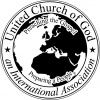Countering the Rapture Error

Popular books and movies spin themes around this doctrine that essentially teaches Christ will come back twice—first coming into the atmosphere to snatch believers away to heaven and later returning with them to confront God's enemies at Armageddon and render final judgment.
Regrettably, we live in a time when most are content to get their knowledge of religion secondhand, preferably through dramatic presentations—including stage, screen, movies and novels.
But you can't afford to neglect your responsibility to prove the truth!
Those willing to take a careful look at the Bible will see that the popular rapture theory doesn't stand up to the scrutiny of God's Word.
The rapture teaching was popularized in the 1970s by Hal Lindsey's writings (The Late Great Planet Earth, etc.) and more recently by Tim LaHaye and Jerry Jenkins in their Left Behind fictional books and films. But where did this concept of the rapture originate?
Credit for the idea generally goes to John Darby, a 19th-century theologian who labored to correct common false teaching related to the second coming of Christ.
Darby correctly believed that Jesus Christ would return to the earth to establish the Kingdom of God and literally rule the world for 1,000 years. In his zeal for countering error, Darby promoted the idea that Christ would come to catch away believers prior to the period of end-time calamities leading up to His final coming.
Caught up, yes—but when?
A study of the topic needs to begin in 1 Thessalonians 4:16-17. Paul writes in verse 16 that when Jesus returns with the sound of a trumpet, those believers who've already died will be resurrected. He goes on to say: "Then we who are alive and remain shall be caught up together with them in the clouds to meet the Lord in the air. And thus we shall always be with the Lord" (emphasis added throughout unless otherwise noted).
The original Greek phrase "shall be caught up," "combines the ideas of force and suddenness seen in the irresistible power of God" (Leon Morris, Tyndale New Testament Commentaries, 1984, p. 94). It's from the Latin translations that we derive the English words "rapt," "raptor," "rapture" and "enraptured." To be raptured in English literally means to be suddenly caught up.
Technically speaking, there is a "rapture" of sorts, in the sense of a sudden catching up of Christ's followers at His return. The Bible calls it the resurrection. The debate is over the nature of this event and when it occurs. The common rapture teaching places it years before the world will witness Christ's triumphant coming, which is definitely not biblical.
Scripture speaks of "the day of the Lord" and "the day of Christ." Both terms refer to the time when Jesus will intervene to judge and ultimately reward His saints and rule over all the earth. "The day of the Lord Jesus Christ" and "the Lord's Day" are similar phrases. This great "day" is not confined to 24 hours. (Please see the chart in the center of this study aid for an in-depth comparison of these terms and related scriptures.)
Isaiah 34:8 refers to "the day of the Lord's vengeance, the year of recompense for the cause of Zion." Introduced by the heavenly signs of Revelation 6:12-17, the following chapters reveal this time to be one of cataclysmic events. And it culminates with Jesus coming in glory with His then-resurrected saints to destroy the armies gathered against Him and stand on the earth (Zechariah 14:1-5; Psalm 149:5-9; Jude 1:14). (See our booklet The Book of Revelation Unveiled for further information.)
Thin proof
Rapture believers are quick to point out that Jesus said no one will know the day of His return for His followers (Matthew 24:36) while other prophecies reveal the length of the final tribulation period leading up to His coming. For instance, Daniel 12:11 says we will be able to count 1,290 days from an end-time event leading into the Great Tribulation (called "the abomination of desolation") until His return. So the point is made that for us to not know the day it must come before that event—thus the rapture. Yet Daniel was told that he would be resurrected at "the end of the days" (Daniel 12:13)—the end of the two series of days just mentioned, including the 1,290. That places Daniel's resurrection after the tribulation period. This is contrary to the common rapture doctrine.
Along with the statement about not knowing the day, Christ also said: "Then two men will be in the field: one will be taken and the other left. Two women will be grinding at the mill: one will be taken and the other left. Watch therefore, for you do not know what hour your Lord is coming" (Matthew 24:40-41). The rapture argument is that, without warning, some people will just vanish—being secretly raptured by Christ. Since this is compared to people living life as usual and not knowing they were on the brink of disaster, as in Noah's day (Matthew 24:37-39), the argument is made that this disappearance of believers can't be amid the hard times of the Great Tribulation and Day of the Lord.
But was Jesus even talking about people being caught up in the air to Him, or was He saying one would be taken and another left? Note that the people of Noah's day "did not know until the flood came and took them all away" (Matthew 24:39). So being taken here was a bad thing—being taken in calamity and death. Likewise it would seem that those who are "taken" in the end time are those who are swept away by the swirl of catastrophic events. Those who are "left" are spared. This has nothing to do with the rapture.
Despite the lack of biblical evidence for the common rapture doctrine, many still cling to it. Some denominations even refer to it as "the blessed hope." They take this phrase from Titus 2:13, where Paul writes that we should be "looking for the blessed hope and glorious appearing of our great God and Savior Jesus Christ."
As they see it, the word "appearing" conveys something secretive and sudden—that is, the rapture. Therefore "blessed hope" becomes a sort of shorthand for this rapture in literature and films on the doctrine. A few other New Testament references that mention "the appearing of Christ" are also often cited, as if these scriptures strengthen the case.
But all of these are simply referring to Christ's coming, either the first time as a perfect sacrifice for sin or the second time as the invincible King.
Nothing in any of the verses has anything to do with a secret rapture of believers to heaven before the end-time tribulation period—despite the attempts of many evangelical theologians to read the passages this way. We will indeed be caught up into the air to be with Christ—but this will come at the end of the Great Tribulation and Day of the Lord.
